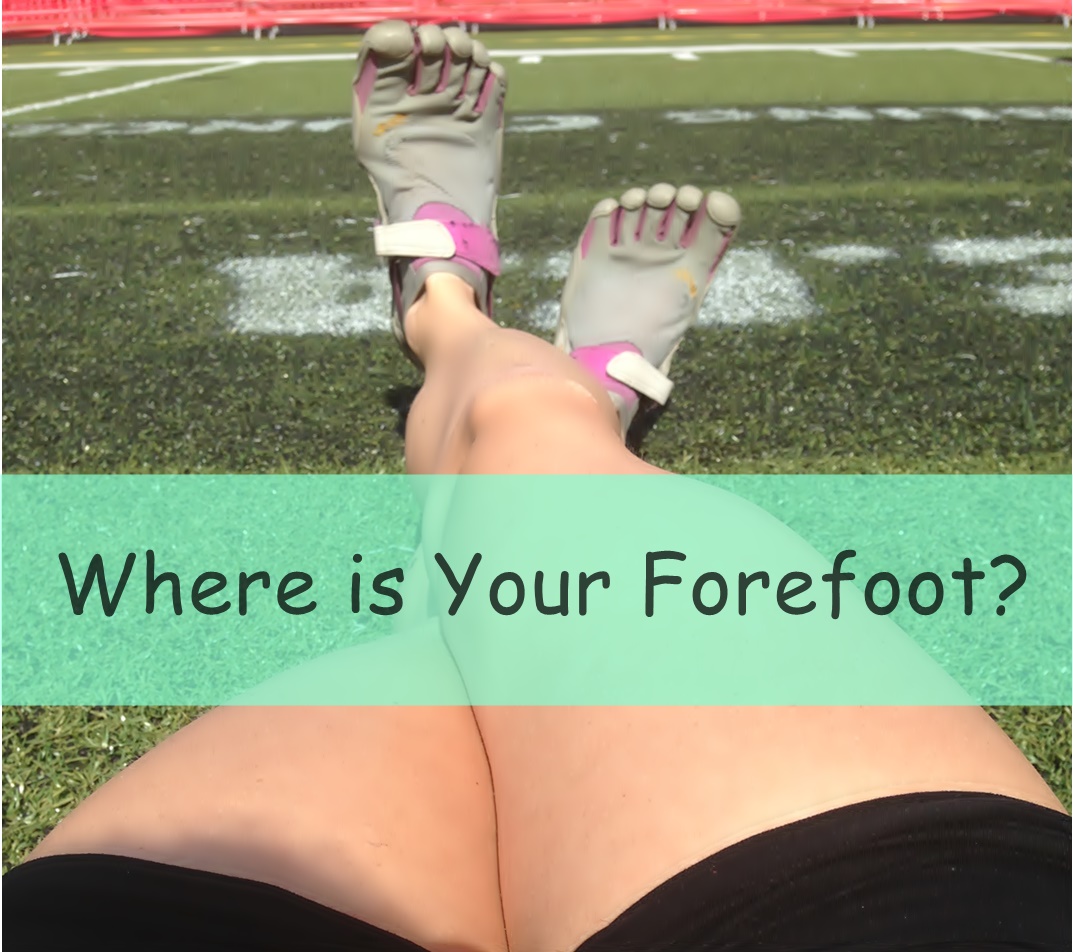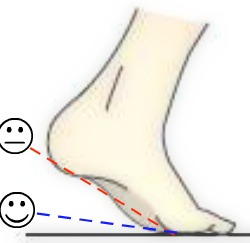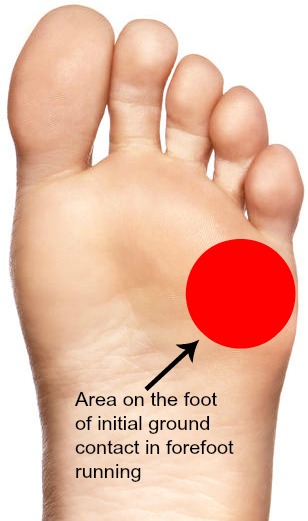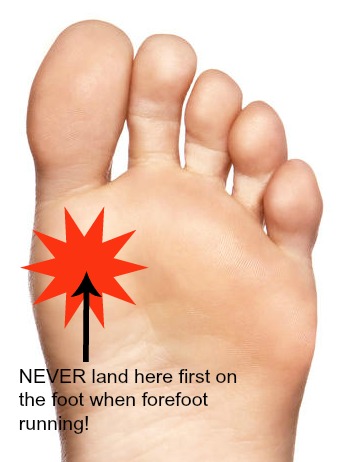The most common question forefoot running learners ask is where is your forefoot? This is a good question because many runners believe that in forefoot running, the toes are the forefoot. As a consequence, many runners make the mistake of toe-striking when forefoot running.

Where is Your Forefoot?
The forefoot is the balls of the foot, just under the toes.
In forefoot running, the FIRST part of the foot to contact the ground is the ball of the foot, followed by the lowering of the heel to the ground.
The opposite foot strike to forefoot running is heel strike running where the heel is the first part of the foot to contact the ground and the forefoot makes ground contact last.
To eliminate braking, impact transients, and minimize the ground reaction force, the forefoot must be the first part of the foot to contact the ground while running.
- If the heel contacts the ground first, shock attenuation, joint loads and torque as well as tibia acceleration increases.
What Part of the Forefoot Contacts the Ground First When Forefoot Running?
In forefoot running, the first part of the forefoot to contact the ground is closer to the outside of the forefoot (under the 4th and 5th metatarsal head, shown below.
This is how habitual barefoot runners and most elite runners strike the ground with the forefoot.
Never Land Under the Big Toe First
One of the biggest mistakes forefoot running learners make is landing first on the MTP region.
The MTP area (under the 1st and 2nd toe) is not anatomically stable to withstand discrete vertical plantar stress at touchdown.
Experts once assumed that due to its large diameter and load bearing surface, the 1st metatarsal head would be strong enough to absorb impact at foot strike. However, this is not the case as previous reports have found that increased plantar stress at touchdown on the MTP resulted in unfavorable joint remodelling.
Landing first on the MTP area also results in a greater ankle plantar flexion angle compared with landing first on the outside of the forefoot which involves a flatter foot placement and a small plantar flexion ankle.
- A high ankle plantar flexion angle at touchdown increases toe strain and bending moments on the 1st and 2nd metatarsal heads.

The Take Home Message
The forefoot is the balls of the foot, not the toes. However in forefoot running, although the forefoot is the first part of the foot to touch the ground, it is important to remember that the lateral aspect of the forefoot contacts the ground first, not directly under the big toe.
More From Run Forefoot:
- Forefoot Strike Running vs Heel Strike Running
- Why Run Forefoot
- Injuries Caused by Heel Strike Running
- Best Shoes for Forefoot Running
References:
Gross, TD and Bunch, RP. A mechanical model for metatarsal stress fracture during distance running. Amer J Sports Med, 1987; 17(5):669-674.
Bretta Riches
BSc Neurobiology; MSc Biomechanics candidate, ultra minimalist runner & founder of RunForefoot. I was a heel striker, always injured. I was inspired by the great Tirunesh Dibaba to try forefoot running. Now, I'm injury free. This is why I launched Run Forefoot, to advocate the health & performance benefits of forefoot running and to raise awareness on the dangers of heel striking, because the world needs to know.
Latest posts by Bretta Riches (see all)
- Can You Run In Barefoot Shoes? Yes, But DON’T Heel Strike! - 21/07/2024
- Why Cushioned Running Shoes Are Really Bad for Your Feet - 19/07/2024
- Do Cushioned Running Shoes Cause Injuries? - 17/07/2024



I have noticed you don’t monetize your blog, don’t waste your traffic,
you can earn additional bucks every month because you’ve
got hi quality content. If you want to know how to make
extra $$$, search for: Mrdalekjd methods for $$$